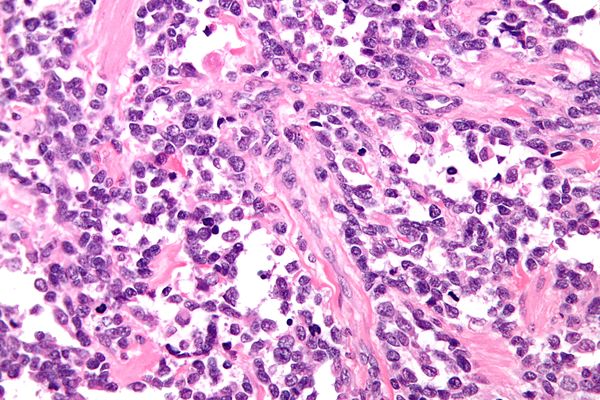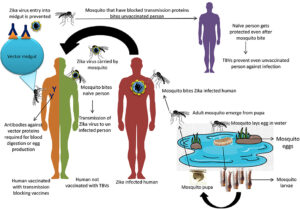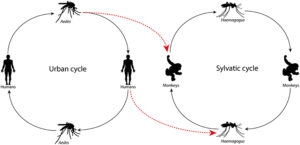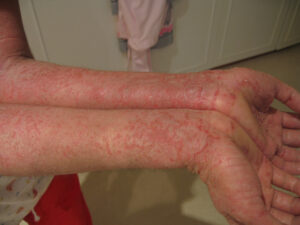Rhabdomyosarcoma, often abbreviated as RMS, is a rare and aggressive form of cancer that primarily affects the muscles. Despite its rarity, it is one of the most common soft tissue sarcomas in children. This article delves into the intricacies of this condition, exploring its causes, symptoms, diagnosis, treatment options, and ongoing research efforts.
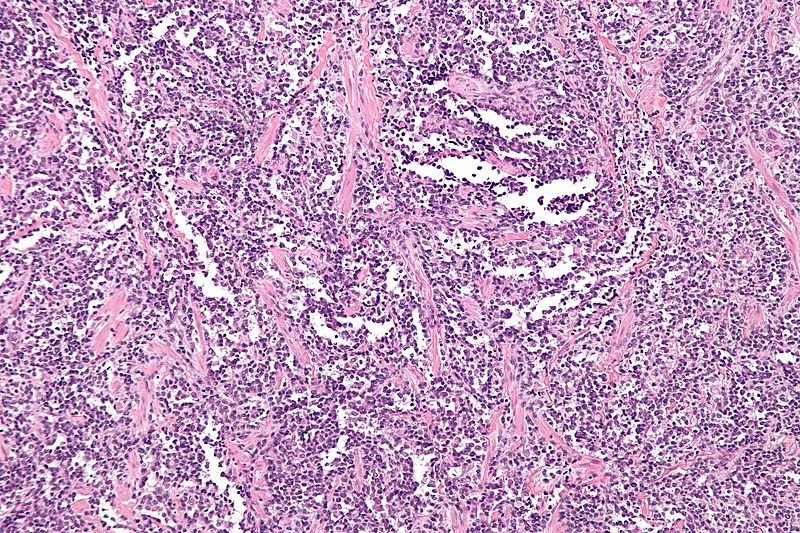
What is Rhabdomyosarcoma?
Rhabdomyosarcoma is a type of cancer that originates in the soft tissues, specifically in the cells that are meant to develop into skeletal muscles. These cells, known as rhabdomyoblasts, are responsible for forming voluntary muscles that allow movement in the body. When these cells grow uncontrollably, they form a tumor, leading to this specific type of cancer.
This disease can occur at any age but is most commonly diagnosed in children under the age of ten. It accounts for approximately three to four percent of all childhood cancers, making it relatively uncommon compared to other pediatric malignancies.
Types of Rhabdomyosarcoma
- Embryonal Rhabdomyosarcoma: This is the most common type and typically occurs in children under the age of six. It often develops in the head, neck, or genital areas.
- Alveolar Rhabdomyosarcoma: This type is more aggressive and tends to affect older children and teenagers. It usually occurs in the arms, legs, chest, or abdomen.
- Pleomorphic Rhabdomyosarcoma: This is the rarest form and is generally found in adults. It involves larger, more irregular cells.
Causes and Risk Factors
The exact cause of rhabdomyosarcoma remains unknown, but researchers have identified several factors that may increase the risk of developing this condition.
Genetic Predisposition
Some genetic conditions are associated with an increased risk of developing rhabdomyosarcoma. These include:
- Li-Fraumeni Syndrome: A rare inherited disorder that predisposes individuals to various types of cancer.
- Neurofibromatosis Type 1: A genetic condition that causes tumors to grow on nerve tissue.
- Beckwith-Wiedemann Syndrome: A growth disorder that can lead to an increased risk of certain cancers.
Environmental Factors
While there is no definitive evidence linking environmental factors to rhabdomyosarcoma, some studies suggest that exposure to radiation or certain chemicals might play a role in its development. However, more research is needed to confirm these associations.
Symptoms of Rhabdomyosarcoma
The symptoms of this cancer vary depending on the location of the tumor. Common signs include:
- A noticeable lump or swelling that may or may not be painful.
- Bulging of the eye or vision problems if the tumor is near the eye.
- Bleeding or discharge from the nose or throat if the tumor is located in the nasal cavity or sinuses.
- Difficulty urinating or having bowel movements if the tumor is in the pelvic area.
- Pain or weakness in the affected area if the tumor is in a limb.
In many cases, these symptoms can mimic those of less serious conditions, which is why early diagnosis can sometimes be challenging.
Diagnosis of Rhabdomyosarcoma
Diagnosing this type of cancer involves a combination of physical examinations, imaging tests, and laboratory analyses. The process typically includes the following steps:
Physical Examination
A healthcare provider will begin by performing a thorough physical examination. They will assess the size, shape, and location of any lumps or swelling and check for other signs such as pain or restricted movement.
Imaging Tests
To get a clearer picture of the tumor, doctors may order imaging tests such as:
- Magnetic Resonance Imaging (MRI): Provides detailed images of soft tissues and helps determine the extent of the tumor.
- Computed Tomography (CT) Scan: Offers cross-sectional images of the body and can help identify whether the cancer has spread to other organs.
- X-rays: May be used initially to detect abnormalities in bones or soft tissues.
Biopsy
A biopsy is often necessary to confirm the diagnosis. During this procedure, a small sample of the tumor is removed and examined under a microscope to determine whether the cells are cancerous.
Laboratory Tests
Blood tests and other laboratory analyses may be conducted to assess overall health and rule out other potential causes of the symptoms.
Treatment Options for Rhabdomyosarcoma
The treatment plan for this cancer depends on several factors, including the type of tumor, its location, the stage of the disease, and the patient’s age and overall health. The primary treatment modalities include surgery, chemotherapy, and radiation therapy.
Surgery
Surgical removal of the tumor is often the first step in treating rhabdomyosarcoma. The goal is to remove as much of the tumor as possible without damaging surrounding tissues or organs. In some cases, complete removal may not be feasible due to the tumor’s location.
Chemotherapy
Chemotherapy involves the use of drugs to kill cancer cells or stop them from growing. It is often used before surgery to shrink the tumor or after surgery to eliminate any remaining cancer cells. Commonly used drugs include vincristine, actinomycin D, and cyclophosphamide.
Radiation Therapy
Radiation therapy uses high-energy beams to target and destroy cancer cells. It is particularly useful for tumors that cannot be completely removed through surgery or for cases where the cancer has spread to nearby tissues.
Targeted Therapy and Immunotherapy
Emerging treatments such as targeted therapy and immunotherapy are being explored for their potential to treat rhabdomyosarcoma. Targeted therapy focuses on specific molecules involved in cancer growth, while immunotherapy harnesses the body’s immune system to fight the disease.
Ongoing Research and Clinical Trials
Due to the complexity and rarity of rhabdomyosarcoma, ongoing research is critical to improving outcomes for patients. Scientists are actively investigating new treatment strategies, including:
- Genomic Studies: Analyzing the genetic makeup of tumors to identify potential targets for therapy.
- Novel Drug Combinations: Testing combinations of existing drugs to enhance their effectiveness.
- Stem Cell Transplants: Exploring the use of stem cell transplants to restore healthy cells after high-dose chemotherapy.
Clinical trials are also underway to evaluate the safety and efficacy of experimental treatments. Participation in these trials offers hope for patients who have exhausted standard treatment options.
Living with Rhabdomyosarcoma
For patients and families affected by this disease, living with rhabdomyosarcoma can be emotionally and physically challenging. Supportive care plays a crucial role in managing symptoms and improving quality of life. This may include:
- Pain Management: Using medications or alternative therapies to alleviate discomfort.
- Psychological Support: Counseling or support groups to help cope with the emotional impact of the diagnosis.
- Nutritional Guidance: Ensuring adequate nutrition to maintain strength during treatment.
Additionally, connecting with advocacy organizations and communities dedicated to supporting individuals with rare cancers can provide valuable resources and encouragement.
Conclusion
Rhabdomyosarcoma is a complex and challenging disease that requires a multidisciplinary approach to diagnosis and treatment. While significant progress has been made in understanding and managing this condition, continued research and innovation are essential to improving outcomes for patients. By raising awareness and fostering collaboration among researchers, clinicians, and families, we can work toward a future where this rare cancer is better understood and more effectively treated.
